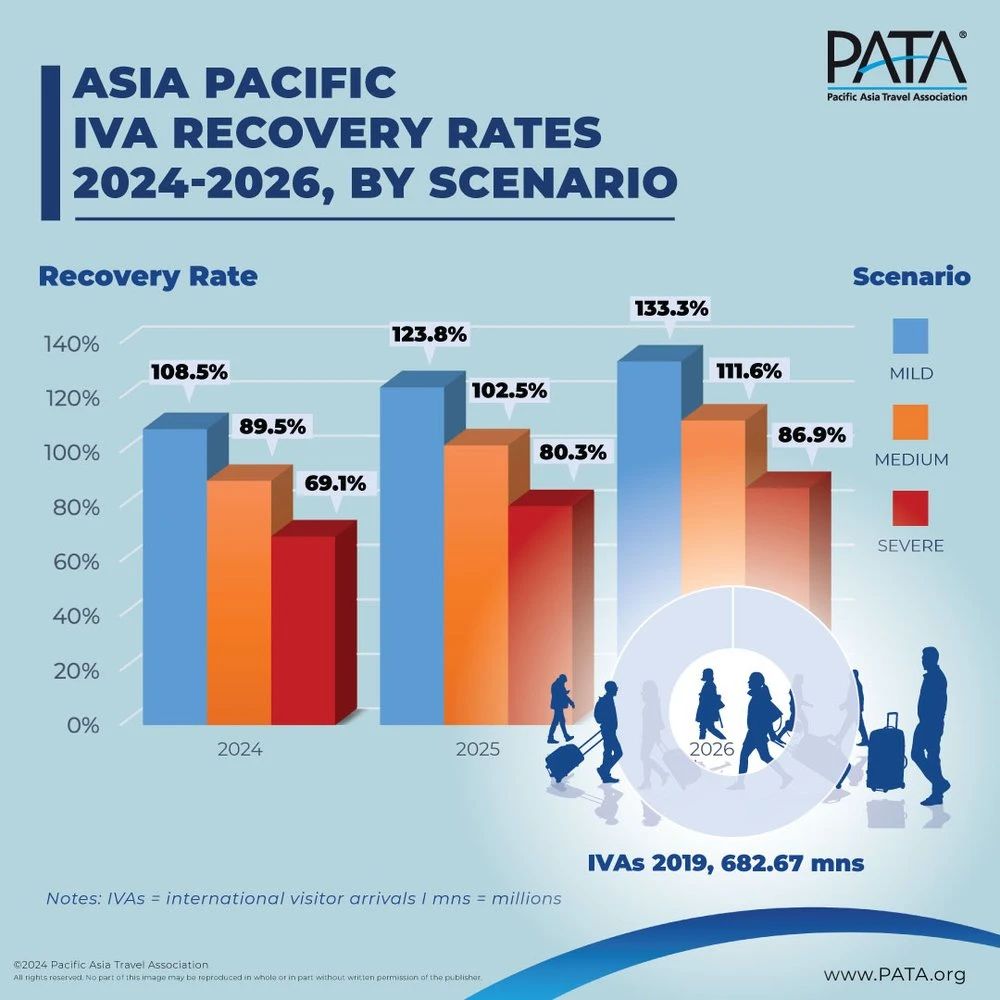The forthcoming Mid-Year Report on Asia-Pacific Tourist Forecasts 2024-2026 by the Pacific Asia Travel Association (PATA) predicts that the number of international tourists in the Asia-Pacific region will continue to grow strongly in 2024, in line with earlier forecasts, and that Northeast Asian tourists will remain the main driving force until 2026.
The Asia-Pacific Mid-Year Report on Tourist Forecasts for 2024-2026 predicts that in the moderate scenario, the number of inbound tourists in the Asia-Pacific region will exceed the pre-pandemic level in 2019 for the first time in 2024, and will exceed it in 2025 in the medium scenario. However, in the severe scenario, the number of tourists in 2024 will be 31% lower than the 2019 level, and will still be 13% lower in 2026. Therefore, the persistent challenges cannot be ignored.

Noor Ahmad Hamid, CEO of PATA, said that the prediction of a grim scenario reflects that although the current situation is generally optimistic, geopolitical tensions, the impact of climate change, and economic uncertainty are still the root causes of obstacles to the growth of the Asia-Pacific travel market. Therefore, the tourism industry still needs to make continuous efforts and introduce innovative solutions that can effectively address related challenges.
At the sub-regional level of destinations, the growth rate in the medium scenario is led by Micronesia with a growth rate of 77.8%, South America with a growth rate of +47.0%, and Southeast Asia with a growth rate of +36.0%. The absolute annual growth rate will be led by Northeast Asia with a growth rate of +44.6 million, Southeast Asia with a growth rate of +36.2 million, and North America with a growth rate of +12.7 million.
The strong growth in the number of inbound tourists in the Asia-Pacific region from 2023 to 2024 is mainly driven by tourists from Northeast Asia, especially the 35.9 million additional tourists from Chinese Mainland, the 8.5 million additional tourists from Macao, and the 7.6 million additional tourists from South Korea.
Northeast Asia will still dominate the Asia-Pacific region from 2023 to 2026, with each of the seven major source markets expected to add 111 million new inbound tourists to the region. Among the top 10 source markets, only the United States is not located in Northeast Asia. From another perspective, of the 258.3 million new inbound tourists expected to arrive in the Asia-Pacific region from 2023 to 2026, 60% are expected to come from Northeast Asia.
Noor Ahmad Hamid said that this mid-year report shows that the Asia-Pacific region is still moving towards growth even in a severe situation, and the expected growth in the number of inbound tourists will also make a significant contribution to the overall tourism economy. However, he also stressed that the tourism industry must no longer focus on the number of inbound tourists as in the past, but must shift its focus to managing the growth of the number of tourists in a responsible and sustainable manner, in order to promote positive trends such as quality tourism experience, environmental protection, and community participation.
Editor Ⅰ: Zhang Wenwen
Editor Ⅱ: Wu Dan
Editor Ⅲ: Liu Guosong














